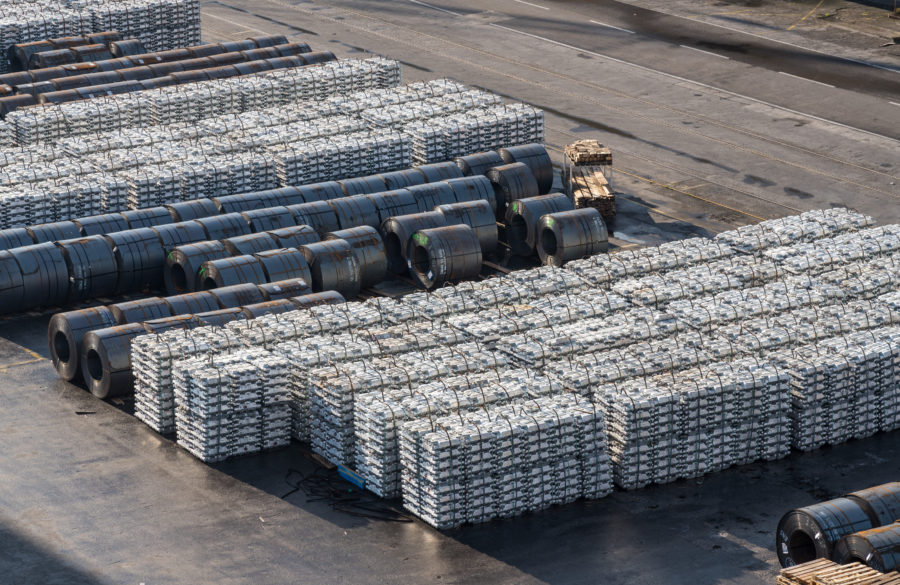Nunavut: The Epicentre of a New Diamond Exploration Boom in Canada

Finding diamonds in Canada was, for many years, little more than a prospector’s hope. But with the discovery of diamonds in Nunavut in the early nineties, this hope became a reality that soon led to active exploration for the elusive gem throughout the country – specifically, on the Canadian Shield.
Canada became a diamond producer in October 1998, when the Ekati diamond mine opened about 300 kilometres northeast of Yellowknife. By April 1999, the mine had produced one million carats. And by 2003, the country became the world’s third largest diamond producer on a value basis, after Botswana and Russia.
Today, diamond exploration and discovery is undergoing a renaissance in Canada’s north that rivals the first wave of successful exploration. Most of the efforts are converging in Nunavut, the largest and newest territory of Canada.
Although the Canadian northern territories are not the easiest places in which to live and work, there are a number of junior and senior companies operating in these areas. These companies have to deal with harsh climates, limited infrastructure and a very fragile environment. But as demand for minerals, particularly diamonds, continues to grow, both new and established operators are taking a more active interest in the region.
Peregrine Diamonds Ltd. is one of the protagonists of the new success story. The company revitalized the diamond exploration scene last year, by reporting a remarkable discovery of three major outcropping diamond-bearing kimberlites at its Chidliak property on Baffin Island.
Chidliak, located 150 km northwest of Iqaluit, the capital of Nunavut and the company’s earlier stage Nanuq project, located 300 kilometres north of Rankin Inlet in Nunavut, are both textbook cases of grassroots or greenfields exploration low-budget programs that were taking place while attention was focused primarily on DO-27.
The Chidliak program began in 2005, when BHP Billiton approached Peregrine with an offer to jointly explore southern Baffin Island. “The agreement was that, together, we would undertake a reconnaissance program that covered roughly the southern third of Baffin Island. We would fund it equally and then Peregrine would take the data and run with it,” says Peregrine President, Brooke Clements.
After the programs’ first year, during which the most promising properties were acquired, the funding responsibility fell to Peregrine alone, but BHP retained back-in rights.
Despite being discovered a year earlier than Chidliak, Nanuq is currently at about the same stage, for two reasons. Three kimberlite pipes have been found on each site, but those at Nanuq, while encouraging, do not offer the promising diamond counts seen in kimberlites tested at Chidliak. Future exploration work at Nanuq will be focusing on finding new pipes. Meanwhile, the work at Chidliak will be split between searching out new pipes and continuing to estimate the value of the one already known to hold diamonds.
A bit of luck also favoured Chidliak. “Usually, kimberlites are covered by soil and aren’t visible from the surface,” explains Clements. “But in the case of Chidliak, the sampling crew went to three promising sites and found not just indications of kimberlites, but outcroppings of the pipes themselves exposed on the surface. We were fortunate because we kind of jumped a year ahead of the normal sequence. Without drilling a single hole, we know we have diamonds and kimberlites with significant tonnage potential on the property,” he said of the significance of the outcroppings.
Clements describes the results as “exceptional,” and not just because the coarse diamond size distribution indicates potential for large commercialization of diamonds. Unlike most diamond-bearing kimberlites in northern Canada, which typically occur under lakes or are buried by overburden, the Chidliak kimberlites outcrop on the surface.
.
“It’s still early days but we’re very excited by the potential as we’ve identified more than 65 geophysical anomalies within the property,” says Clements.
Key Players
Until recently, Tahera Diamond Corporation was the best known name in Nunavut’s diamond scene. The company runs Jericho Diamond Mine, Canada’s third diamond mine and Nunavut’s first, located about 400 km (249 mi) northeast of Yellowknife, Northwest Territories.
Two and a half years after that high-profile startup, Tahera has abruptly ended production at the Jericho mine, forcing Prime Minister Stephen Harper and his government to take over.
Deloitte and Touche has since been appointed as receiver and contracted to undertake care and maintenance at the mine.
It is doubtful that a new owner will soon be found for Jericho.
Other companies currently exploring for diamonds in Nunavut are Indicator Minerals (Nanuq North, in a join venture with Peregrine Diamonds), Shear Minerals (Churchill), Diamonds North Resources (Amaruk) and Stornoway Diamonds (Aviat).
Stornoway, a Vancouver-based exploration company, is the dominant diamond explorer in eastern Nunavut and it has property stretching from the northern tip of the Melville Peninsula to Rankin Inlet on the western shore of Hudson Bay.
Stornoway shares interest in the Aviat property with BHP Billiton – which owns the Ekati mine in the Northwest Territories – and the Hunter Exploration Group. Two of Stornoway’s holdings, Churchill and Quilalugaq, are in the advanced exploration stage.
Governmental Support
To maintain Nunavut’s position as a jurisdiction of choice for mineral investment, the local Government developed a strategy entitled “Parnautit: The Nunavut Mineral Exploration & Mining,” which provides a framework of policies and actions to encourage mineral discovery and development. Released in March 2007, the goal of Parnautit is to create the conditions for a “strong and sustainable minerals industry that contributes to a high and sustainable quality of life for all Nunavummiut.” The plan addresses Nunavut’s regulatory and taxation regimes, workforce training, infrastructure development and environmental baseline availability.
Peter Taptuna, Nunavut’s Deputy Premier and Minister Responsible for Mines, explains that Nunavut also offers a Development Partnership Agreement (DPA) program that was introduced in 2006 as a means of extending the territorial off-road fuel tax credit (rebate) to developing and producing mines. Through these DPAs, Nunavut’s Government and mine operators work cooperatively in areas such as education and training, socioeconomic monitoring and mitigation, as well as in infrastructure development. As the physical and economic circumstances of no two mines are alike, so too each DPA should reflect the unique and shared needs of the mine operator and the local population. Proponents entering the regulatory phase are encouraged to begin negotiations on a Development Partnership Agreement for their projects.
For now, the reality of the diamond industry is much like the weather conditions in Nunavut- harsh. In spite of this, the Canadian industry is up to the challenge. While current prices, logistical challenges, inclement weather, personnel shortages and training needs remain concerns, all signs point to Nunavut seeing growth in mining operations in the near future, just in time to offer its diamonds to an eager market.
Links and Resources
Diamonds in Canada – Background
Diamonds: Still Shining Brightly for Canada’s North
Painful Road to Stabilization for the Diamond Market
More News
China’s mining investment under Belt and Road Initiative sets new record – report
China's overseas mining investment under its Belt and Road Initiative hit another peak last year at $21.4 billion.
March 29, 2025 | 10:26 pm
Column: Europe’s future metals strategy hindered by current crisis
Chinese over-capacity and high energy prices have accelerated the long-term decline of European steel and aluminum production.
March 29, 2025 | 02:25 pm
{{ commodity.name }}
{{ post.title }}
{{ post.excerpt }}
{{ post.date }}



Comments